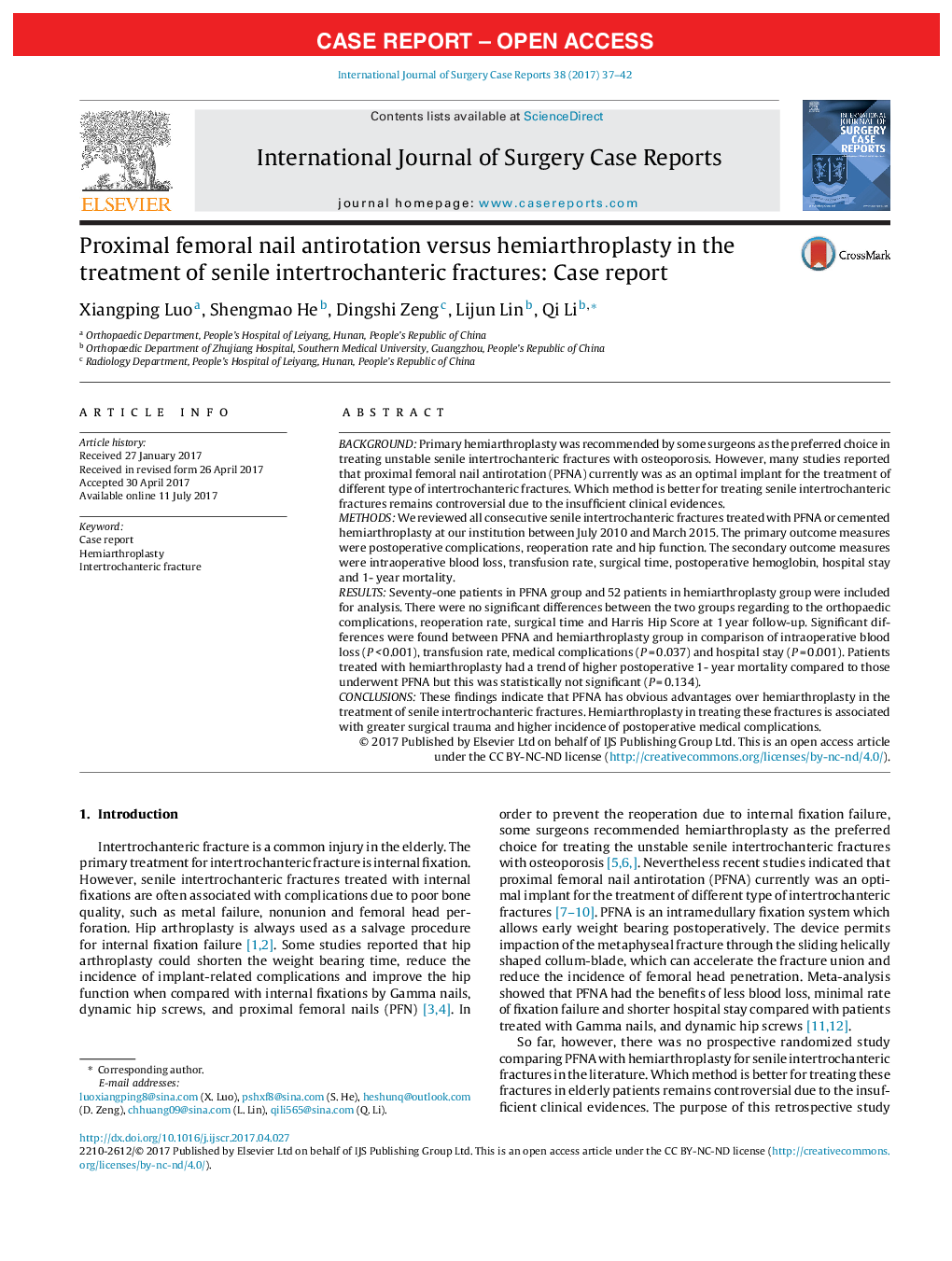| Article ID | Journal | Published Year | Pages | File Type |
|---|---|---|---|---|
| 5732521 | International Journal of Surgery Case Reports | 2017 | 6 Pages |
â¢PFNA is an effective method in treating senile intertrochanteric fractures with low rates of internal fixation failure and related reoperation.â¢Hemiarthroplasty in treating these fractures is associated with greater surgical trauma and higher incidence of postoperative medical complications.â¢Hip arthroplasty should be used as a salvage procedure for internal fixation failure in treating senile intertrochanteric fractures.
BackgroundPrimary hemiarthroplasty was recommended by some surgeons as the preferred choice in treating unstable senile intertrochanteric fractures with osteoporosis. However, many studies reported that proximal femoral nail antirotation (PFNA) currently was as an optimal implant for the treatment of different type of intertrochanteric fractures. Which method is better for treating senile intertrochanteric fractures remains controversial due to the insufficient clinical evidences.MethodsWe reviewed all consecutive senile intertrochanteric fractures treated with PFNA or cemented hemiarthroplasty at our institution between July 2010 and March 2015. The primary outcome measures were postoperative complications, reoperation rate and hip function. The secondary outcome measures were intraoperative blood loss, transfusion rate, surgical time, postoperative hemoglobin, hospital stay and 1- year mortality.ResultsSeventy-one patients in PFNA group and 52 patients in hemiarthroplasty group were included for analysis. There were no significant differences between the two groups regarding to the orthopaedic complications, reoperation rate, surgical time and Harris Hip Score at 1Â year follow-up. Significant differences were found between PFNA and hemiarthroplasty group in comparison of intraoperative blood loss (PÂ <Â 0.001), transfusion rate, medical complications (PÂ =Â 0.037) and hospital stay (PÂ =Â 0.001). Patients treated with hemiarthroplasty had a trend of higher postoperative 1- year mortality compared to those underwent PFNA but this was statistically not significant (PÂ =Â 0.134).ConclusionsThese findings indicate that PFNA has obvious advantages over hemiarthroplasty in the treatment of senile intertrochanteric fractures. Hemiarthroplasty in treating these fractures is associated with greater surgical trauma and higher incidence of postoperative medical complications.
